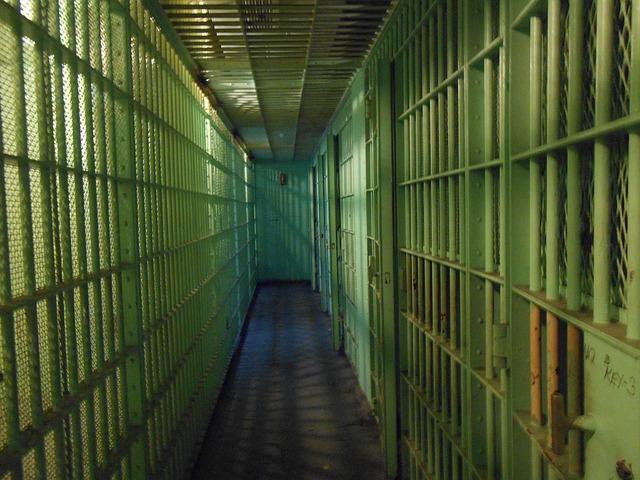Scores of primarily black men hunch over their labor, working in inhumane conditions. They do not run away, they do not receive compensation and they do not have a choice. They have been stripped of their humanity.
Think we’re talking about slavery in the 1800s? Think again. We’re talking about modern-day prison labor.
Prisons around the United States — from private, for-profit prisons to federal prisons to state prisons — exploit prisoners as a source of cheap labor. Prisoners considered “medically able” are required to work within the institution. Some prisoners do receive some payment for the work, but it is negligible at best: The Bureau of Prisons pays inmates around $0.12 an hour for their labor. Between convict leasing, the U.S. Federal Prison Industries, and other means of prisoner-manufacturing, penal labor is a billion-dollar industry.
https://badgerherald.com/news/2017/12/05/prison-reformists-lawmakers-clash-over-proposal-for-tougher-crime-laws/
Prisoners work mainly in production. They roast potatoes, sell cattle and make everything from office chairs to car parts to pillows. If you take comfort in purchasing clothing marked “Made in the USA” because it absolves you of the guilt of supporting sweatshops abroad, I’ve got some news for you: If you look on the inside of your tag, it should actually say, “Made in your own backyard by exploited workers making next to nothing, many of whom were probably wrongly convicted, most of whom pose little to no threat to society and all of whom deserve much more respect than what our prison-industrial complex has given them.”
So, how is this legal? Wasn’t slavery abolished in 1865 thanks to the 13th Amendment?
Well, yes and no. The 13th Amendment contains a provision legalizing this form of slavery: “Neither slavery nor involuntary servitude, except as a punishment for crime whereof the party shall have been duly convicted, shall exist within the United States, or any place subject to their jurisdiction.”
https://badgerherald.com/opinion/2017/10/03/americas-reputation-as-the-land-of-opportunity-is-on-the-brink-of-disappearing/
Prison labor came to fruition immediately after the ratification of the 13th Amendment. Strictly speaking, the abolition of slavery was devastating to the U.S. economy, so people scrambled to find a way around the law. Vagrancy — being unemployed — became illegal. Businesses refused to hire black people, so police threw black people in jail for vagrancy.
The very same businesses then contracted out free prison labor. In other words, prison labor is just slavery by another name.
Prison labor is now often justified under the guise of rehabilitation and vocational training to prepare prisoners for reintegration into society. In reality, most of the jobs prisoners do are menial tasks unlikely to bolster their resumés.
In recent years, however, the record-low unemployment rate has led to an increasingly competitive job market, creating opportunities for people who would otherwise have a tough time finding a job: Namely, those with criminal records, disabilities, long bouts of unemployment and, now, even current inmates.
https://badgerherald.com/opinion/2017/10/02/criminal-disenfranchisement-21st-century-americas-suffrage-crisis/
According to the New York Times, prisoners in a minimum-security correctional facility in Dane County have the option of working at a legitimate job at full wage. This program is completely optional, and participants make just as much as their un-incarcerated coworkers. Furthermore, they have the option to continue working once they get out of prison.
With the shrinking labor pool, many businesses have opened up their job positions to people with fewer prior qualifications, meaning they are willing to do more in-house training. This provides employed inmates with the opportunity to actually develop skills that can be used in careers and life beyond prison.
Programs like this, along with education of inmates and increased access to mental health care for prisoners help redefine the purpose of incarceration. This is a question that we seem to have trouble answering: Why do we put people in jail? Is it to protect the law-abiding citizens by separating out the dangerous ones? To teach the criminals a lesson? To help them learn from their misdeeds? To teach them how to behave better so they may rejoin society in a more productive way?
https://badgerherald.com/opinion/2017/12/05/latest-gun-control-legislation-beacon-of-hope-for-country/
Think about all the different terms we use to refer to incarceration. Prison, penitentiary, reformatory, correctional facility, detention center. We use all these “interchangeably,” but they actually all are pretty different from each other.
The purpose of incarceration — particularly for non-violent offenders who make up 90 percent of federal prisoners — should be to help people learn from their wrongdoing and help them become better. Productive rehabilitation has been shown to reduce recidivism, making our society safer overall. We should be investing into programs like this, which support people during and after incarceration, supply quality workers to businesses in an ethical way and continue to chip away at the archaic, racist institutions that have been legally ingrained into our society.
Cait Gibbons (cgibbons3@wisc.edu) is a sophomore studying statistics and Chinese.


